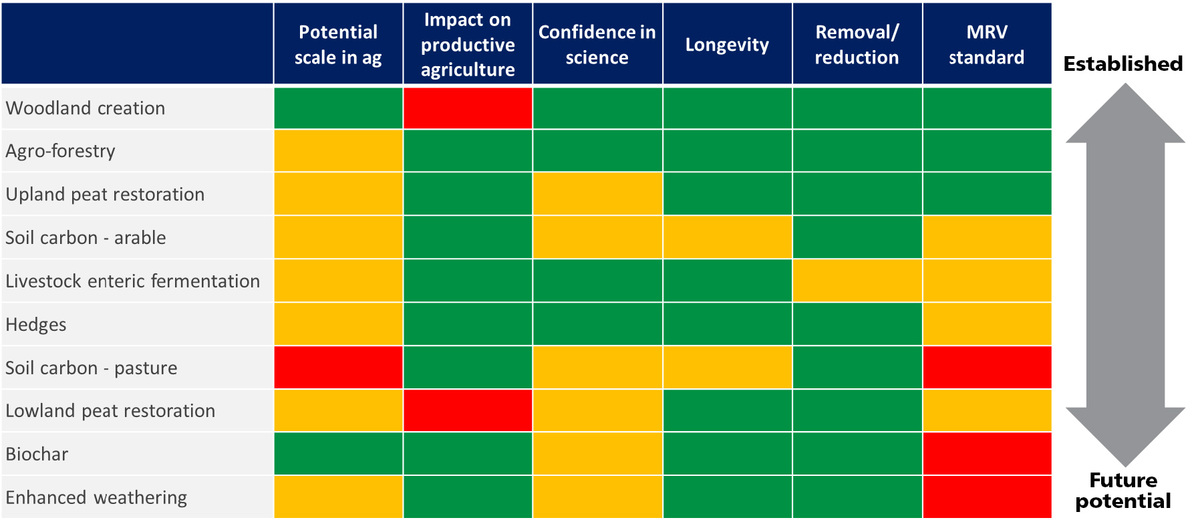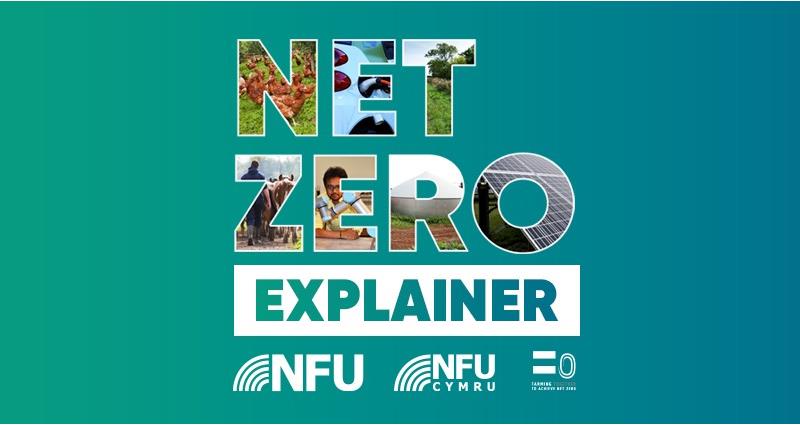To reach net zero many are looking to carbon offsets – effectively buying someone else’s carbon storage to offset their own emissions – as part of their net zero strategy.
Carbon is used as a catch-all term for all greenhouse gases, including methane and nitrous oxide.
The two types of carbon markets
Markets are created to incentivise action in reducing emissions.
1 Compliance market
Companies with legal obligations to reduce their emissions (for example, energy companies and fertiliser manufacturers) can trade offsets through regulated emissions trading schemes (ETS) such as the UK ETS.
An ETS is a system of trading the permits to emit.
Government sets a quota for an industry’s total emissions under a cap-and-trade system.
The price of permits is determined by supply and demand; the carbon price is depressed when too many permits have been issued or when emissions levels are lower.
The Climate Change Commission recommends extending the ETS to agriculture and land use. New Zealand may enter agriculture in their ETS from 2025.
There are practical challenges to including agriculture in an ETS, such as reliably recording the GHG emissions or net carbon position of a farming enterprise to underpin the trading and use of permits. Therefore, land use has to date been excluded and the focus is instead on energy intensive industries where emissions are easy to measure and monitor.
2 Voluntary carbon market
The voluntary carbon market is a system of generating and trading carbon credits (a permit for the owner of the credit to emit a certain amount of GHG’s).
Credits are used to meet non-legally binding commitments, for example, a company’s goal to become net zero.
Credits are used to offset residual emissions – those left once all technologically, and economically feasible solutions have been implemented.
Carbon credits
Credits can be generated from any activity that reduces or removes emissions within defined rules on:
- monitoring
- reporting and
- verification (MRV) standards.
You can only use carbon credits as an offset once; selling it to the offset market or within the supply chain (as an inset) means that you cannot (retire it) count it to bring your own farm to net zero.
Carbon certificates
Each certificate represents 1 tonne of CO2e (Carbon Dioxide equivalent) emissions reduced, removed or avoided.
Certificates do not offset the buyer’s emissions and do not form part of the buyer’s carbon accounting but do provide certified evidence of Scope 3 reductions.
Scope 1 Emissions – Direct emissions that a business generates from its operations, eg, methane from cows.
Scope 2 Emission – Indirect emissions that a business generates from its purchased energy.
Scope 3 Emissions – All other indirect emissions that occur upstream and downstream in a business’ supply/value chain.
Carbon insets
Insets are where a company buys the credit within the supply chain. Retailers and processors who have their own net zero targets would rather buy insets, than see that credit going to another sector. Potentially, if a farm is carbon negative (they sequester more carbon than they emit), they can sell their surplus credits as well as have a net zero footprint.
Types of offset
1 Reduction (priority 1)
Reducing emissions, such as through resource use efficiency and feed additives to reduce methane.
2 Removal
NBS (Nature based solutions) such as woodland creation are seen as a viable way to remove CO2 from the atmosphere in the short term.
Technology based solutions – carbon capture use and storage (CCUS) and Direct Air Capture (DAC) – are in development and not yet available at scale. NBS cover broader environmental benefits and ecosystem services than storing carbon which includes flood and drought alleviation, air and water quality, health and wellbeing.
What is a high-quality offset?
According to the Oxford Principles organisations should cut emissions first and then move to scaling up removals.
Offsetting will only be acceptable by society if the buyer (the corporate) has a holistic net zero strategy which prioritises their direct (Scope 1 and 2) emissions ahead of offsetting. To be high quality offsets must be:
Additional
Offsets need to enable actions which would otherwise have been economically unviable, and which result in additional carbon being avoided/removed that otherwise wouldn’t have This means you can’t sell offsets from existing trees, hedgerows (unless you expand them) or carbon already stored in the soil.
Permanent
The carbon must be locked up, ideally permanently. This means actions such as tree-planting or changes to land management practices need to be maintained for the long term (potentially decades). Carbon sequestered in crops is part of the carbon cycle, not
Verifiable
The amount of avoided/removed carbon needs to be verifiable using a robust and widely accepted MRV (measurement, reporting and verification) methodology. This means that cost-effective ways to accurately assess the impact of nature-based solutions such as soil carbon sequestration need to be developed.
Some questions answered
How do carbon offsets links to ELMs (Environmental Land Management Schemes)?
Stacking or bundling of payments with the private sector is permitted within ELMs and will serve to pump prime the voluntary market. The NFU is asking for maintenance of existing carbon stocks to be rewarded. Incentives for ecosystem benefits through SFI (Sustainable Farming Incentive) pay for actions rather than outcomes. Clarity is needed to understand to what extent an action paid for under the scheme, that also supports the sequestering of carbon, is counted as additional to qualify for a private carbon payment. Each ecosystem benefit needs to be distinct, measurable and paid on outcomes. To prevent double counting, you can only receive money once.
Whose carbon is it?
The NFU position is that the person doing the work should receive the benefit. Tenants should review their agreements and collaborate to share the risk and manage the land.
What is the tax treatment?
The tax implications of some land use changes are currently unclear. It is however important that tax is not a barrier to farm diversification into environmental markets. The NFU urge the government to consider changes to the tax system in relation to farmland to support these wider policy objectives.
What are the issues and risks with entering offset markets?
Reputationally, carbon offsets are seen by some as a disincentive to take action as corporates can just pay someone else to offset their emissions rather than investing in improving their operations. It is recognised that emissions in certain sectors are hard to reduce in the shorter term.
- Retailers and food processors are committing to supply chain (Scope 3) emissions targets, which could potentially prevent farmers being able to sell offsets on the open market. Consider what are your own net zero/greenhouse gas footprint reduction aspirations?
- Given the price uncertainty as well as the long-term obligations, farmers and growers should beware of entering into legally binding commitments.
- The cost and lack of consistency in accurately measuring carbon levels could reduce the economic viability of some
- Sellers should be aware of the risk to maintaining the asset over long time periods. Fire, flood, drought and erosion could all affect the value of a credit, opening farmers and growers up to future claims.
Where can I receive contract advice?
As with any business contract, it is important to seek advice. The Legal Advice Service (LAS) offers a NFU Contract Checking Service.
Qualitative assessment of potential offsetting approaches in UK agriculture
Global demand for voluntary carbon offsets is expected to grow by 4-20 times by 2030.

